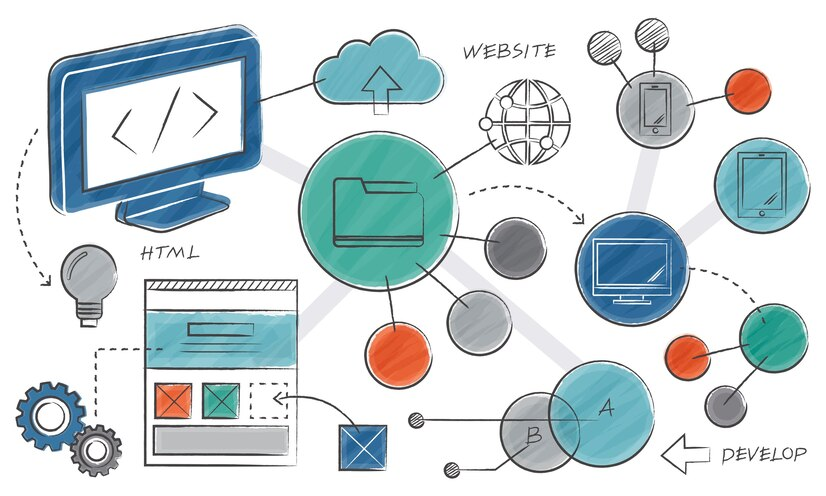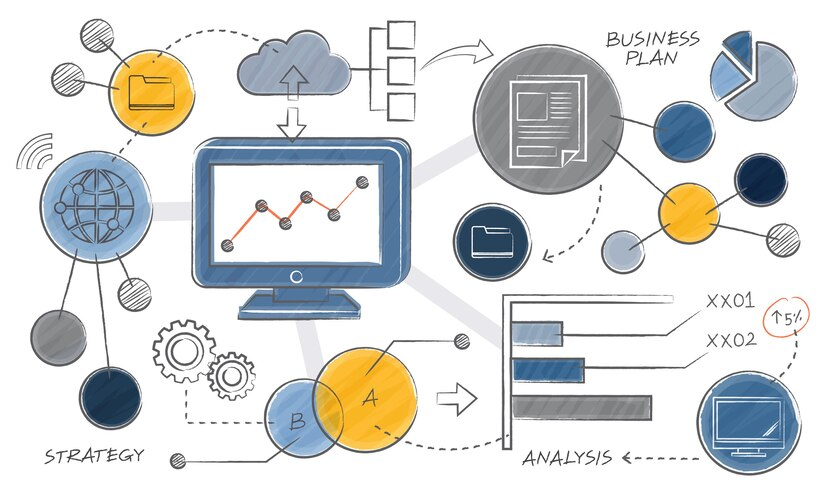- Published on
Introduction to Golang for Web Development
- Authors
- Name
Go, or Golang, is an open source programming language created by Google with a great growth rate in recent years, which is used for building simple, reliable and efficient software. Go is designed to be fast, easy to support concurrency and simple and therefore it is ideal for building web applications and services.
Why Use Go for Web Development
Here are some of the key reasons why this language is used by Golang Web Development company and why it is a great fit for building web apps:
Simple and Easy to Learn
Go has a simple, tidy syntax that does away with many complexities and edge cases in other languages. This makes Go easy to learn even for non-experienced programmers. The learning curve is further reduced due to Go's focus on convention over configuration.
Fast Performance
Go compiles down to native machine code which results in very fast program execution. It has a faster startup time and runs efficiently with a small resource footprint. These attributes are vital for building responsive and scalable web apps.
Built-in Concurrency Support
Go provides goroutines and channels that make it easy to write concurrent programs that fully utilize multi-core CPUs. This is useful for handling multiple simultaneous requests on web servers.
Excellent Cross-Platform Support
Go compiles to a single binary with no dependencies, which makes deployment incredibly simple. These binaries can run on a wide variety of platforms like Linux, Windows, macOS, Docker and cloud platforms.
Vibrant Open Source Ecosystem
Go has an extensive collection of powerful open source libraries for web development, testing, monitoring and deployment. Popular web frameworks like Gin, Beego and Revel are implemented in Go.
Setup and Tools for Building Go Web Apps
To build web apps, you need to install Go and set up your development environment with a code editor and essential tools:
Install go. Download the latest Go version (1.23 as of writing) for your OS from the official website. Follow the installation instructions. Confirm the installation with go version.
Code editor. Use a code editor like VS Code with Go extensions. Make sure to enable support for autocomplete, linting and debugging. Other good editors include Vim, Emacs, Atom and Sublime Text.
Essential tools:
- go mod for dependency management;
- gofmt for code formatting;
- golint and govet for linting;
- ginkgo, goconvey and gotest for testing.
Additionally, install tools like Git for version control and Postman for testing APIs.
With Go set up, you are ready to start building your web app!
Handling Requests and Routing in Go
Handling HTTP requests and routing them to the appropriate server logic is fundamental to building web apps. Here is how routing works in Go:
net/http Package
The net/http package in the Go standard library provides the fundamental HTTP server and client implementations. The key components are:
http.Handlerinterface. Implements the ServeHTTP method to process HTTP requests.http.HandlerFunctype. Wraps request handling functions to satisfy the http.Handler interface.http.ListenAndServe(). Starts the HTTP server that listens on a port.
Request Handling Function
A basic request handler function has the following signature:
func handler(w http.ResponseWriter, r *http.Request) {
// Request handling logic
}
The http.ResponseWriter is used to construct and write the HTTP response. The *http.Request provides details on the client request like URL, headers, body etc.
Router Package
The net/http package only provides a basic HTTP server. For request routing based on URL, method, headers etc, a router package like Gorilla Mux is needed.
For example, Gorilla mux provides easy subrouter mounting and powerful URL parameter matching. Route handlers are wrapped in http.HandlerFunc adapters.
router := mux.NewRouter()
router.HandleFunc("/products", getProducts).Methods("GET")
http.ListenAndServe(":8000", router)
There are other good router packages like Chi, Gin and FastHTTP.
Rendering Responses in Go
To generate responses, Go web apps typically render JSON data or load HTML templates:
JSON Response
JSON APIs are popular for web and mobile apps. Go provides excellent JSON support through the encoding/json package.
For example:
type Product struct {
ID int `json:"id"`
Name string `json:"name"`
Price float64 `json:"price"`
}
products := []Product{
{1, "Widget", 3.99},
{2, "Gadget", 12.95},
}
w.Header().Set("Content-Type", "application/json")
json.NewEncoder(w).Encode(products)
HTML Templating
Server-side HTML rendering is commonly done using templates. Popular Go template engines include:
- text/template - Built-in Go templates
- html/template - Specialized HTML templates
- Goview - Supports layouts and partials
- Ace - Extends Go templates
- Amber - HAML-like syntax
For example:
t := template.Must(template.ParseFiles("layout.html"))
t.Execute(w, data)
Layouts and partials help avoid duplication in templates. Overall, Go templating provides fast rendering with minimal overhead.
Accessing Databases in Go
Most web apps need to store and retrieve data from a database. Here are some options for database access in Go:
SQL Databases
The database/sql package provides a generic interface for SQL databases. Each database driver needs to implement this interface.
Popular SQL Go drivers include:
- PostgreSQL - pgx
- MySQL - go-sql-driver
- SQLite - mattn/go-sqlite3
For example:
import (
"database/sql"
_ "github.com/lib/pq"
)
db, err := sql.Open("postgres", "connection_string")
The database/sql interface supports connection pooling, queries, prepared statements, transactions etc.
NoSQL Databases
Go provides excellent drivers for popular NoSQL databases like MongoDB, Redis, DynamoDB etc. Some examples:
- MongoDB - mgo
- Redis - go-redis
- DynamoDB - aws/aws-sdk-go
These provide native Go idiomatic interfaces for working with the NoSQL databases.
ORM Libraries
Object-Relational Mapping (ORM) libraries like GORM provide high-level abstractions for working with databases using Go structs and objects, without needing to write SQL queries.
Frontend JavaScript Integration
Go backend apps often need to integrate with frontend JavaScript code and frameworks like React, Vue and Angular. Here are some integration approaches:
REST APIs. Expose Go app capabilities are REST-style JSON APIs that are called by frontend JavaScript code using fetch() or a library like Axios.
Server-Side Rendering. Prerender HTML templates on the Go server with data and send it to the client for faster initial loads. Then optionally make JS calls.
WebAssembly. Compile Go to WebAssembly that runs on web browsers allowing shared frontend/backend code. Options include TinyGo and GopherJS.
GRPC-Web. Expose GRPC endpoints from a Go server and access them transparently from the JavaScript browser via a GRPC-Web proxy.
Go Web Frameworks
Web frameworks provide libraries and tooling to speed up building Go web apps by handling cross-cutting concerns:
Gin Web framework. Gin is a very popular framework that boasts high performance. It has an expressive API using martinis, middleware, crash-free error handling and JSON validation.
Beego framework. It provides ORM support, parameter validation, session handling and configuration hot-reloading to aid Go web development. It is suitable for commercial projects at scale.
Buffalo framework. Inspired by Ruby on Rails, Buffalo provides scaffolding for rapid web application prototyping with support for databases, authentication, assets bundling and more.
Revel framework. It emphasizes convention over configuration, hot code reloading and support for testing. It has high productivity features like code generators.
Fiber framework. It touts itself as an Express.js styled web framework built on top of FastHTTP offering stellar performance. It provides routing, middleware, templating and utility functions.
There are many more good frameworks like Echo, Gizmo, Gloo etc. Each has its own strengths and development philosophy for building web apps.
Conclusion
Go provides a powerful set of capabilities that enable simple, reliable and efficient web application development. Its high performance, built-in concurrency and cross-platform nature make Go an ideal choice for today's web workloads.
Using its net/http package, versatile router libraries, JSON/template rendering, database drivers and frontend integration options, you can build full-featured web apps and services. Robust web frameworks like Gin, Beego and Buffalo further simplify Go web development.


